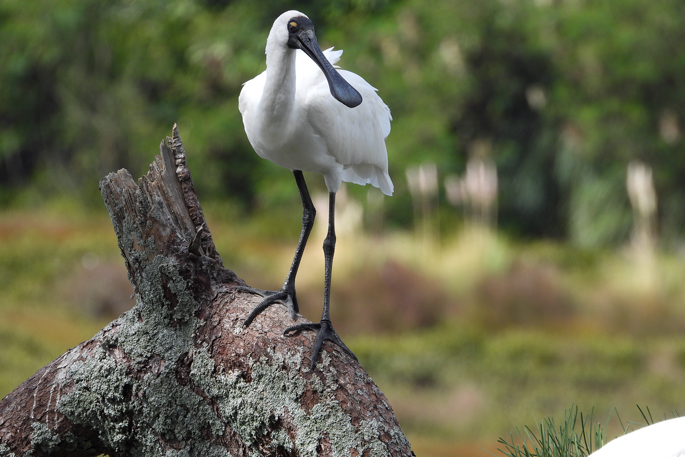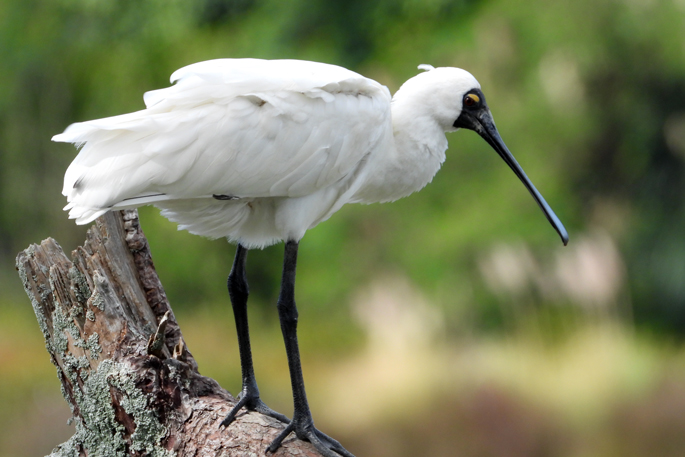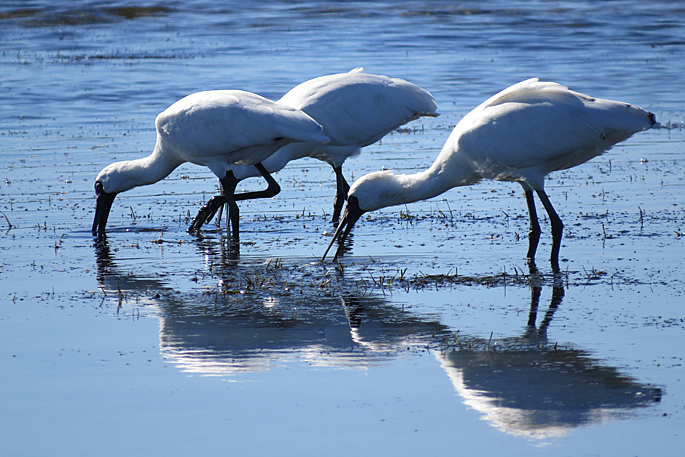The national Royal Spoonbill count has been postponed until June 29 and 30.
In early May, bird enthusiasts around the country were asked to prepare for a quest to count the elusive Kotuku ngutu papa, known to many as the Royal Spoonbill, on June 22 and 23.
"We have changed the date of the spoonbill count to coincide with the national shorebird count," says BirdsNZ regional representative Paul Cuming.
"So spoonbill and shorebirds will be counted on the same day."
New Zealand’s esteemed ornithological society, BirdsNZ, sent out the call to action, asking the community to gear up for an avian adventure like no other.
 Royal Spoonbill at Yatton Park. Photo: Paul Cuming.
Royal Spoonbill at Yatton Park. Photo: Paul Cuming.
With binoculars at the ready and a keen eye for detail, Kiwis across the country have been tasked with going out into their local estauries and bird roosting areas to count how many Royal Spoonbills they see.
Bay of Plenty Spoonbill counters are asked to send in their reports, sightings, and tales of the majestic bird's whereabouts to Paul via the email address [email protected].
“These will go into a count database and be compared with previous counts,” says Paul.
He has already spotted the birds roosting at Yatton Park, and a group of them have been seen in Kōpurererua Valley.
 Royal Spoonbill at Yatton Park. Photo: Paul Cuming.
Royal Spoonbill at Yatton Park. Photo: Paul Cuming.
Every observation becomes a vital clue, a puzzle piece in the grand mosaic of New Zealand's avian landscape.
But why the Spoonbill, you may ask?
While whispers suggest their numbers are on the rise across the nation, murmurs persist that they've yet to establish their court in the Bay of Plenty.
“It is thought that the species is increasing although there is scant evidence they are breeding in the Bay of Plenty,” says Paul.
He is challenging the Tauranga and Bay of Plenty community to prove that theory wrong.
 Royal Spoonbills in Tauranga. Photo: Supplied.
Royal Spoonbills in Tauranga. Photo: Supplied.
The stately Royal Spoonbill is one of six spoonbill species worldwide, and the only one that breeds in NZ.
They were first recorded in New Zealand in 1861, can live up to 36 years and in flight, hold their neck outstretched and trail legs behind, looking rather awkward, like a "Dr Seuss" cartoon bird.
In 1977 the NZ population was estimated at 52 birds. The most recent estimate in 2012 was 2360 birds.
As reports of sightings flood in, Paul and others will eagerly compile the data. Will this year's count reveal a surge in their numbers?
So, grab your binoculars, dust off your birding guidebooks, and join Paul and the team on this epic quest on June 29 and 30.
2024 Garden Survey
The 2024 NZ Garden Bird Survey runs from June 29 to July 7.
This annual survey, run by Landcare Research and supported by Birds New Zealand, started in 2007 to study the distribution and population trends of our common garden birds.
By participating you will help build a picture of how native and introduced birds are faring in our gardens, indicate which species may be in decline and guide future conservation efforts. Make our birds count!
To participate in the 2024 Garden Survey, choose an hour on one day during the survey period and find the perfect bird counting spot. Use the NZ Garden Bird Survey tally sheet to count the number of birds you see or hear.
Use the website's identification resources to help you tell birds apart.
Use the form on the NZ Garden Bird Survey website to submit your final count. This form will be available on June 29.
For details visit gardenbirdsurvey.nz/. For bird identification and calls visit nzbirdsonline.org.nz.

.jpg)

0 comments
Leave a Comment
You must be logged in to make a comment.